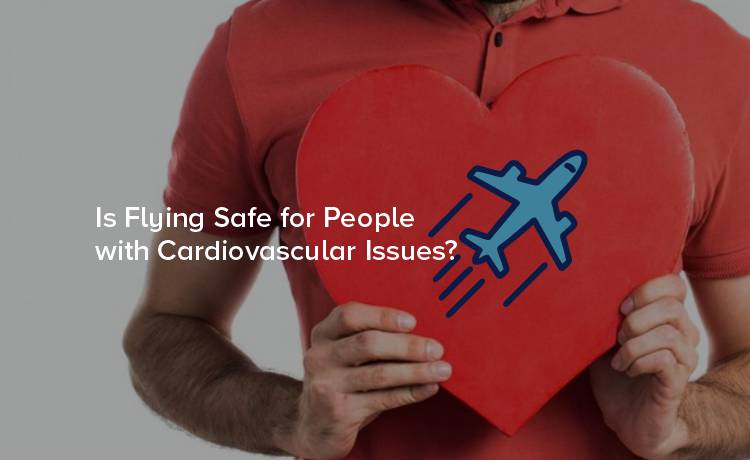
For those living with cardiovascular issues, the thought of flying can raise some serious concerns. Questions like, "Will the change in air pressure affect my heart?" or "Could sitting for long hours increase my risk of complications?" often arise. Air travel introduces unique physical conditions—reduced oxygen levels, cabin pressure changes, and limited mobility—which can feel intimidating for anyone managing a heart condition.
Fortunately, flying with cardiovascular issues is generally safe for most people, but it does require some planning and precautions.
Flying presents a set of conditions that may influence how your body functions, particularly your cardiovascular system. Here are the key factors to consider:
Cabin air pressure is regulated to simulate being at 6,000 to 8,000 feet above sea level. While safe for most passengers, this results in slightly lower oxygen levels than what you're used to on the ground. For individuals with severe heart issues or conditions like chronic obstructive pulmonary disease (COPD), this mild hypoxia—lack of oxygen—could lead to symptoms like shortness of breath or fatigue.
The changes in air pressure during takeoff and landing can strain your cardiovascular system. Although healthy individuals tolerate these fluctuations easily, travelers with conditions like arrhythmias or reduced heart function may notice discomfort or exacerbation of symptoms.
Sitting for prolonged periods in a cramped airplane seat can reduce blood flow, increasing the risk of developing deep vein thrombosis (DVT)—a type of blood clot often associated with long flights. This risk is especially high for those with existing cardiovascular conditions or a history of blood clots.
Understanding these physiological effects is essential for managing heart health while flying.
While flying is safe for most travelers with cardiovascular conditions, certain groups may need additional consideration or medical advice. Talk to your healthcare provider if you fall into one of these categories:
Your doctor can evaluate your individual risk factors and provide tailored recommendations for your travel plans.
Flying with cardiovascular issues requires a bit of extra preparation, but with the right steps, you can minimize risks and travel with peace of mind.
Before booking your flight, speak with your cardiologist or healthcare provider. They may recommend tests to evaluate your ability to handle air travel or prescribe medications (e.g., blood thinners, oxygen) to manage potential complications.
Some airlines may require a medical certificate if you need oxygen or have a serious heart condition. Make sure any necessary forms are completed before your trip to avoid delays at the airport.
Always bring your prescription medications in your carry-on bag. Consider the following tips:
If you use medical devices like a pacemaker, check with your doctor and the airline about any specific restrictions or recommendations.
Airplane cabins are notoriously dry, and dehydration can strain your cardiovascular system and increase the risk of blood clots. Drink plenty of water during your flight and limit alcohol or caffeine, as both can contribute to dehydration.
To reduce the risk of developing DVT, make an effort to walk the aisle every 1-2 hours. If getting up isn’t an option, perform seated exercises like ankle rolls or leg stretches to promote circulation.
Wearing compression stockings can prevent the pooling of blood in your legs, reducing the risk of swelling and clots. These are especially beneficial for anyone with a history of DVT or poor circulation.
If your condition requires supplemental oxygen during flights, coordinate in advance with the airline. Portable oxygen concentrators and in-flight oxygen services are often available but need prior arrangement.
Taking steps for overall comfort can further reduce stress on your heart during air travel. Here are a few tips to keep in mind:
Even with preparation, it’s important to know when to seek help. Alert the flight crew immediately if you experience:
Cabin crew members are trained to handle medical emergencies and can provide first aid or assist in contacting healthcare services upon landing.
Once you’ve landed, be mindful of how your body feels in the days following your trip. Resume any heart-related precautions, such as keeping up with prescribed medications or monitoring symptoms of fatigue or discomfort. If any unusual symptoms arise, contact your healthcare provider.
Flying with cardiovascular issues doesn’t mean you have to give up exploring new destinations or visiting loved ones. With informed planning, medical advice, and in-flight precautions, air travel can still be a safe and enjoyable experience.